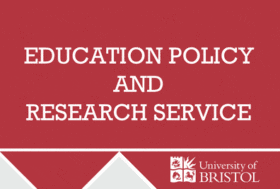Shinrin-Yoku: Enhancing mental health and wellbeing


Scott Buckler and Harriet Moore, Holy Trinity School, UK
What’s the idea?
Shinrin-yoku is translated as ‘forest breathing/bathing’ and was developed in Japan during the 1980s, integrating the senses through mindful practice, while immersed in a forest environment (Hansen et al., 2017). The Chinese character for ‘mindfulness’ comprises five characters: eyes, ears, heart and mind, along with undivided attention, all of which encompass how to engage with shinrin-yoku.
What does it mean?
The difference between shinrinyoku and just going for a walk is that the former is a purposeful, mindful engagement through specific guided intervention focusing on the senses. Research has demonstrated that shinrin-yoku is a way to reduce both educators’ burnout and students’ biological stress response. Specifically, shinrin-yoku:
- reduces blood pressure while increasing heart rate
- reduces anxiety, acute and chronic stress, also chronic depression
- enhances spiritual wellbeing, such as Maslow’s ‘plateau experience’.
With the recent COVID-19 pandemic lockdowns, restrictions on normal recreational activities, and concerns about student and staff wellbeing, engaging with shinrin-yoku is a high value, limited cost, activity which can be engaged with in local green spaces such as parks or wooded areas.
How does it work in practice?
While there is no set criteria for shinrin-yoku engagement, through synthesising research from numerous resources, some suggested activities are provided below:
First 10 minutes: Walk in silence while focusing on breathing naturally. This helps to calm the mind, settle
thoughts, and orientate to the time in the forest environment. Focus on how you are moving, how your muscles work in unison, etc.
Mindful exercise 1: Focus on mindful breathing. As you breathe in, say in your mind the word, ‘calm’. As you breathe out, say in your mind the word, ‘relax’. Repeat this at least nine times. As you breathe in, be aware of what you can smell.
Next 10 minutes: Continue to walk in silence, again focusing on breathing. Focus your attention on the path, bushes, trees, leaves, what you can see in the distance, what you can see close up.
Mindful exercise 2: Open awareness. Stop and focus on one tree, the shape, the formation of the branches, the texture of the bark, the shape of the leaves. Expand your perspective to how that tree sits among many others. Be aware of what thoughts, images, impressions, feelings, come to mind. Next 10 minutes: Continue to walk in silence, again focusing on your breathing. Focus your attention on what you can hear: the wind gentling rustling through the leaves, birdsong, scuttling in the bushes, and so forth.
Mindful exercise 3: Pebble meditation (click on link below for further information).
Next 10 minutes: Continue to walk insilence, focusing on your breathing. Just ‘be’ in the moment. Send compassionate thoughts, to others you know, perhaps someone you have passed, etc., then expand this to a wider concept of humanity.
Want to know more?
• A detailed programme used for the research may be found here.
• Hansen, M.M., Jones, R. and Tocchini, K. (2017). Shinrin-Yoku (forest bathing) and nature therapy: A state-of-the-art review. International Journal of Environmental Research and Public Health, 14(8), 851.










This sounds beautiful. I’m going to try it. Thank you